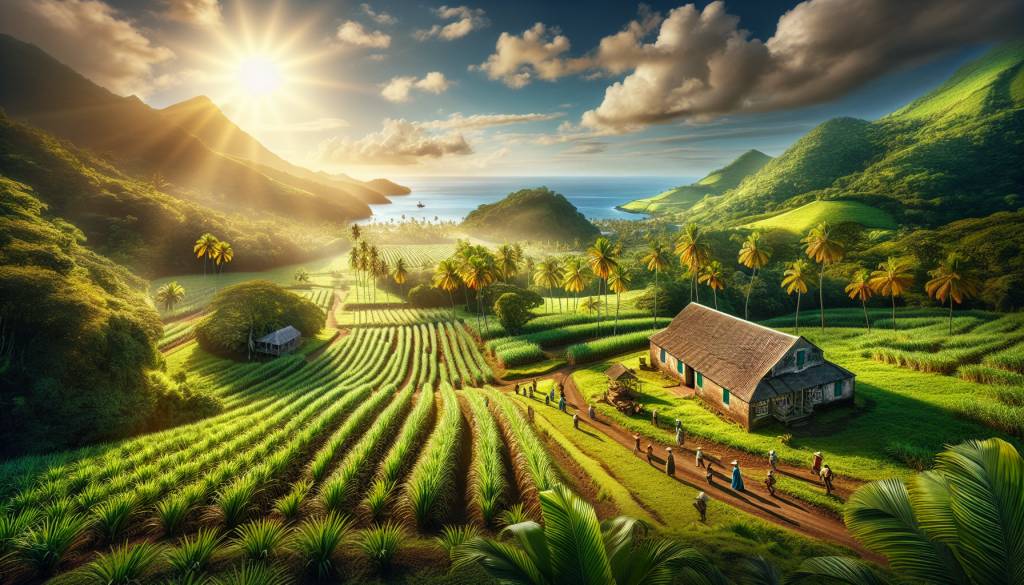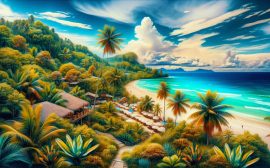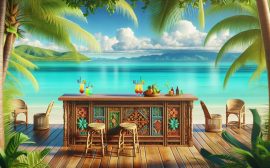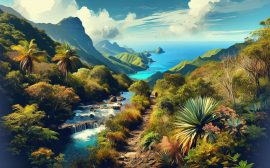The Enigmatic Allure of Martinique’s Plantations
Martinique is not only a stunning tropical retreat but also a land steeped in rich history. When one thinks of the quintessential Caribbean island, imagery of breathtaking beaches and lush forestation comes to mind. Yet beyond its natural wonders, Martinique offers a unique educational journey through its plantation tours, presenting an intimate look at the island’s colonial past and its legacy.
The Historic Backbone of Martinique’s Economy
The island’s economy has been historically intertwined with agriculture, where sugar cane, bananas, and pineapples fields have dominated the verdant landscapes. Plantation tours in Martinique serve as a portal to the era when these plantations were not just farmland but the centerpieces of colonial life and economy. They provide an immersive historical perspective on the trials and advances of the past centuries.
Exploring the Sugar and Rum Heritage
An exploration of Martinique’s plantations often begins with its most famous crop: sugar cane. The cultivation of sugar cane led to the rise of rum production, an integral aspect of Martinique’s cultural identity. Distilleries dotting the island, like the famed Habitation Clément, allow visitors to uncover the link between sugar production and the art of rum making while walking through aged casks and distillation apparatus that tell a story beyond the sweetness of its crops.
Slavery and Its Abolition: Shadows of the Past
While the agricultural wealth of Martinique paints one picture, the plantation tours provide a sobering reflection on the darker chapters of the island’s history. The labor that sustained these estates was a result of a long and painful history of slavery, which wasn’t abolished in Martinique until 1848. Many plantation tours educate visitors on the lives and struggles of the enslaved Africans who were an integral part of plantation life. Sites like the Anse Cafard Slave Memorial poignantly commemorate their history.
Iconic Plantations Open to Visitors
-
The Habitation Clément not only offers rum tastings but also houses art galleries and beautifully restored gardens. A tour here involves walking through a dynamic narrative of cultural evolution, juxtaposing elegance with the austerity of historical truths.
-
Habitation Céron, renowned for its age-old Zamana tree, allows visitors to indulge in the natural splendor while reflecting on the habitation’s past, which dates back to the 17th century.
-
The captivating Habitation Belfort provides a window into banana cultivation on the island, offering tractor tours through its operational banana plantations, showcasing modern agricultural practices amid historical grounds.
Preservation Efforts and Historical Education
Many plantation estates in Martinique have been repurposed into museums and educational sites. The convergence of preservation efforts and historical education is evident in the well-maintained grounds and informative tours. These efforts often highlight the resilience of cultures through the preservation of artifacts, customs, and architectural remnants, thus echoing the island’s dedication to honoring its complex heritage.
Connecting With Nature and Culture
Partaking in a plantation tour in Martinique is not merely a contemplative historical experience; it is an active engagement with the island’s vibrant natural setting. The lushness of the gardens, the aroma of tropical flora, and the enduring structures invite a multisensory appreciation of Martinique’s storied landscape – a living museum where each plantation tells its own tale.
Economic Impact and Sustaining Heritage Tourism
The allure of Martinique’s plantation tours has marked implications for the island’s economy. As a significant contributor to heritage tourism, these historical sites attract those who seek a deeper understanding of the Caribbean’s past. Visitors not only leave with enriched knowledge but also help sustain the local economy through their support of these living monuments to Martinique’s history.
Planning Your Historical Journey
For those looking to embark on plantation tours in Martinique, a strategic approach is recommended. The island’s climate is tropical and best enjoyed outside the wet season, which peaks from June to October. Engaging with knowledgeable tour guides, considering combo plantation and natural reserve excursions, and respecting the historical significance of each site will undoubtedly enrich your experience.
Takeaways from the Timeless Plantation Trails
Visitors to Martinique leave with a greater awareness of the interwoven stories of adversity, perseverance, and transformation. The plantation tours delve deep into the heart of the island’s past, offering profound insights into the societal changes that have shaped modern-day Martinique. By preserving and sharing these narratives, the island pays homage to its roots, cultivating an environment of learning and respect for generations to come.
Embarking on plantation tours in Martinique is not just a passage through the corridors of history, but a navigation across the contours of human experience. It is through these preserved sites and the stories they hold that we glean a nuanced understanding of the past, informing our perspective of the present and inspiring a thoughtful approach to the future.



